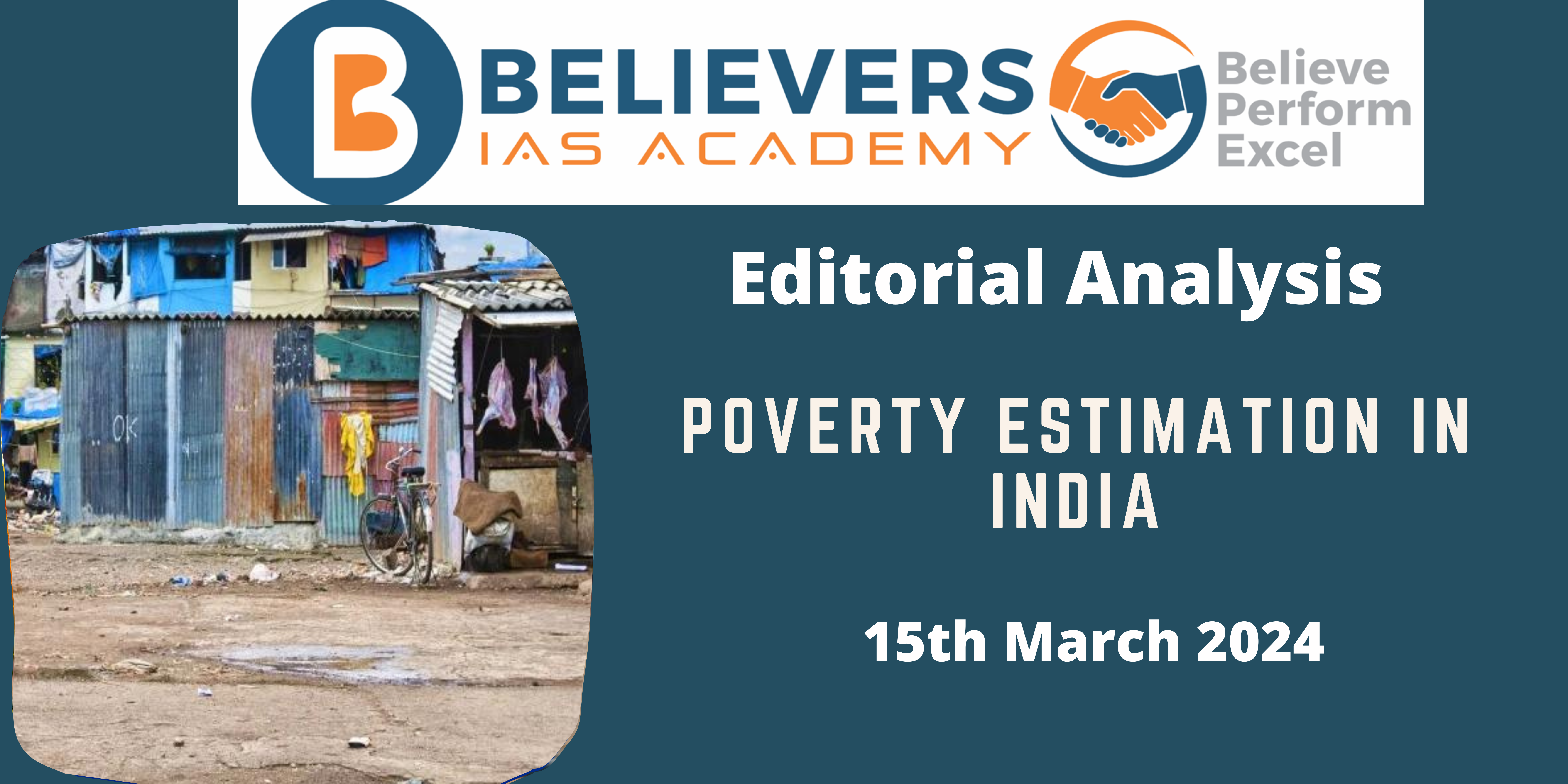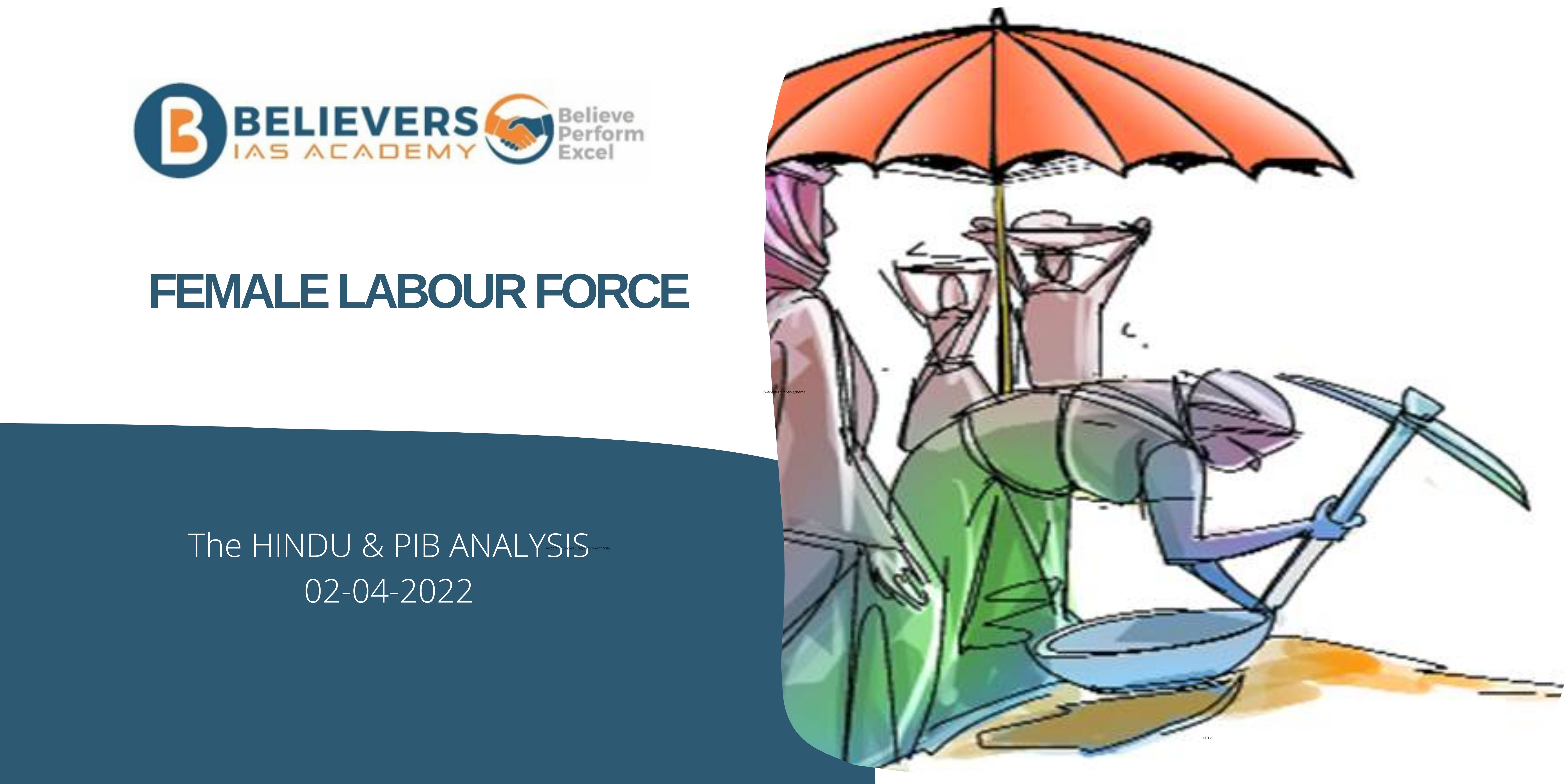Poverty estimation in India
Context:
Recently, NITI Aayog claimed that only less than 5% of Indians live below the poverty line based on the Household Consumption Expenditure Survey (HCES), 2022-23.
Prelims:
Tendulkar committee 2009, Rangarajan committee.
Relevance:
GS-03 (Poverty)
Mains Question:
Critically analyze reduction of poverty in India, considering the challenges associated with it. (250 words)
Dimensions of the Article:
- Poverty estimation
- Discrepancy in Data
- Nutrition and Economic Progress
- What can be done?
Poverty estimation:
- General way of calculating poverty in India is based on the income or consumption levels.
- Below the Poverty Line (BPL): If the income or consumption falls below a given minimum level.
- Poverty Line Calculation:
- It is calculated by NITI Aayog’s task force based on the information surveyed by the National Sample Survey Office under the Ministry of Statistics and Programme Implementation (MOSPI).
- One important thing to note in poverty line estimation is that the income levels are not considered and instead it is based on the consumption expenditure as income of self-employed people, daily wage laborers etc. is varies both temporally and spatially, while consumption pattern remain comparatively stable. Also it is difficult to ascertain the additional income generated through daily wage.
Discrepancy in Data:
- A crucial aspect of the 5% debate revolves around the disparity between consumption expenditure and income growth.
- It shows a significant increase in consumption per capita over the past decade.
- The prevalence of unpaid family helpers in the workforce and stagnant demand for mass consumption goods questions the sustainability of India’s economic growth model.
- The discussion underscores the need for accurate and reliable data to inform policy decisions effectively as the reliability of government and private sector data emerges as a point of contention.
Nutrition and Economic Progress:
- The article discusses the relationship between nutrition and economic progress.
- It acknowledges that while increased spending on non-essential items can be seen as a sign of development, it’s crucial for this to happen alongside an increase in income.
- The article highlights that despite increased spending, a significant portion of the Indian population cannot afford a minimum nutritious diet prescribed by the Food and Agricultural Organization (FAO) for South Asia.
- This indicates that while there may be economic progress in terms of consumption patterns, it doesn’t necessarily translate to improved nutrition for all segments of the population.
What can be done?
- Enhanced Data Quality: Improve the quality and reliability of data collection methods to provide accurate and comprehensive information on poverty and income levels by investing in robust data collection mechanisms and ensuring transparency in data reporting.
- Focus on Inclusive Growth: Implement policies and programs that promote inclusive economic growth, ensuring that the benefits of development reach all sections of society, particularly the marginalized and vulnerable groups.
- Nutrition Security: Address through addressing malnutrition by subsidized food distribution programs, nutritional supplementation for vulnerable populations, and promoting sustainable agriculture practices.
- Strengthen Social Safety Nets: Strengthen social safety nets by focusing on social welfare schemes, healthcare services, and education opportunities to provide a basic level of support to individuals and families living below the poverty line.
- Promote Decent Work and Wages: Ensure access to decent work and fair wages by implementing labor market reforms, enforcing minimum wage laws, and promoting job creation in sectors with high potential for employment generation.
- Empowerment and Education: This includes promoting access to quality education, vocational training, and lifelong learning opportunities.
- Partnerships and Collaboration: Foster partnerships and collaboration between government, civil society, and the private sector to leverage resources and expertise that involve joint initiatives, public-private partnerships, and community-led interventions.



